Introduction
Enterobacteriaceae is one of the largest families belonging to the gram negative rod shaped bacteria. They exist as normal flora of the human and other animal’s intestines. They also live in natural habitats such plants and water. Members of this family are infectious causing mainly intestinal disturbances. Some of the most common infections are typhoid and pneumonia as well as food poisoning. There are two groups of enterobacteriaceae based on their abilities to ferment lactose.
The first group is the lactose fermenting bacteria under which Escherichia, enterobacter and klebsiella bacteria are classified. The other group, the non fermenting bacteria consist of some genera such as Serratia and Haffina. Members of this family are characterized by presence of flagella for motility.
Others have both aerobic and facultative aerobic characteristics while others are non sporing members. They are diagnosed using chemical methods such as the oxidase test, indole test and the urease test. They can be identified through culturing using the MacConkey agar plates as selective media (FIG.3). The aim of this experiment is to study Escherichia coli and Klebsiella pneumoniaea both of which are lactose fermenting bacteria. (3).
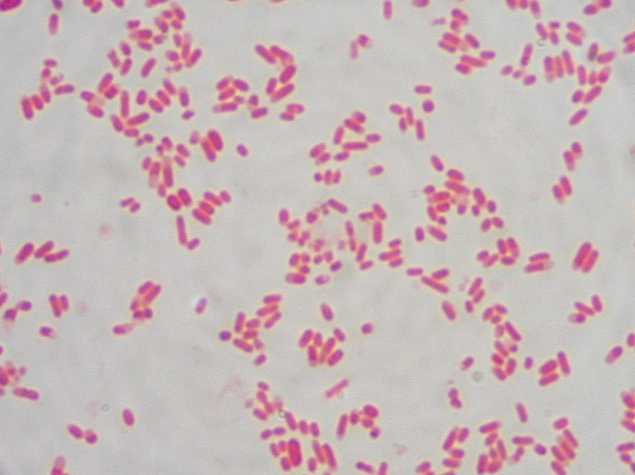

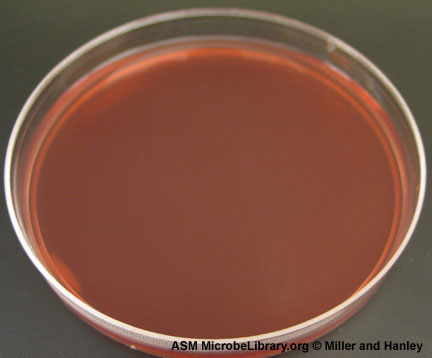
Materials and methods
Refer to scientific skills and tools manual BIOL2310, p 58 – 60.
Results
Table (1).
Discussion
The two organisms appear to be similar in some ways. For instance, they are both giving negative results to oxidase test, they are both rod shaped as shown on the agar plate and they both produce gas in Kligler iron agar. However, their motility rates differed a bit as well as different reactions to various chemical tests such as urease and citrate utilization. Their rates of acetoin production and reaction to methyl red are also different. The difference in motility, however, could have resulted to inadequacy during the experiment.
Table (1): Results of some Different diagnostic methods are used to differentiate between E. coli and K. pneumoniae.
Differentiation of Micrococcus and Staphylococcus
Introduction
Micrococcus and Staphylococcus bacteria are spherical in shape (FIG. 4), do not produce spores and give a positive result to catalase test. (FIG.5). They inhabit the skin and mucous membranes of man and other mammals. Some members of the two genera are pathogenic such as Staphylococcus aureas while others are opportunists such as Micrococcus luteus (4) which may cause infections in immune-compromised individuals. However, the two groups differ in their susceptibility/resistance to antibiotics and other chemical tests as well as in morphological differences. This experiment identifies Micrococcus luteus and Staphylococcus aureus (2).
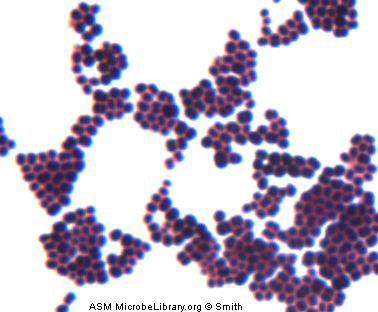
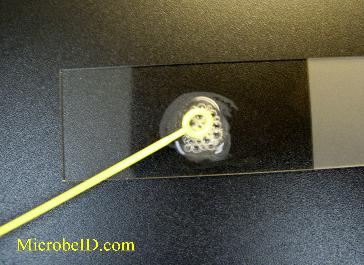
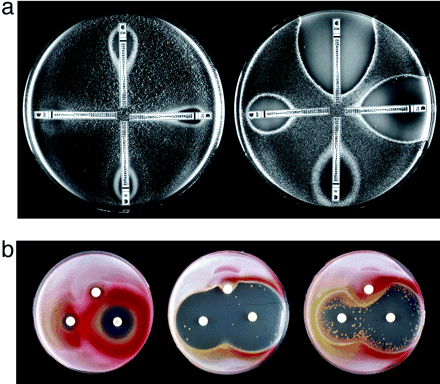
Materials and methods
Refer to scientific skills and tools manual BIOL2310, p. 62-65.
Results
Table (2).
Discussion
As shown on the table (2), both groups of bacteria are spherical in shape and are both catalase positive. The two can be distinguished by the ability of one, S. aureas, to grow in absence of oxygen while the other, M. leutus cannot grow anaerobically. Additionally, S. aureas is oxidase positive while M. leutus is negative but lactose fermenting. They also have different reactions towards basic antibiotics such as bacitracin.
Table (2): The Biochemical tests for S. aureus and M. luteus.
Identification of Staphylococcus species
Introduction
Staphylococci bacteria are gram positive cocci that usually exist in clusters. They exist as normal flora of the human skin, mucous membranes as well as some internal organs of both man and animals. Their natural habitats include water and soil. They are mainly characterized by their inability to produce spores and inability to move.
In addition, they are facultative anaerobic. This genus consists of many species some of which are pathogenic to humans such as S. aureas and S. epidermidis while others are opportunists. S. aureas is the most pathogenic of all especially due to its ability to induce toxins such as alpha and beta toxins hence increasing its ability to cause infections. (1). This genus is easily identified with the coagulase test which shows positive results. (FIG.7). the other species of the genera, are however, coagulase negative and can only cause serious infections in immune-compromised patients. The aim of this experiment is to determine diagnostic methods for Staphylococcus species(3).
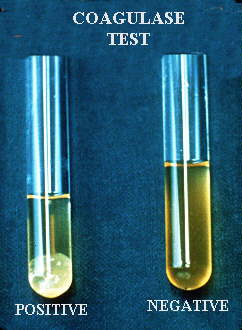
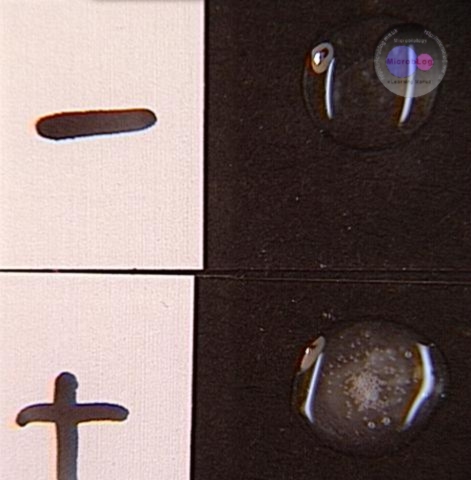
Materials and Methods
Refer to scientific skills and tools manual BIOL2310, p. 67-68.
Results
Table (3) the results of different diagnostic methods for Staphylococcus species.
Discussion
According to the results, Staphylococcus aureas, which is the most common of the Staphylococcus species, can be identified by its ability to produce coagulase and enzymes especially the DNase enzyme. It is also the only species of the genera that can ferment mannitol. Staphylococcus saprohyticus, on the other hand, can be identified from the rest by its ability to resist novobiocin antibiotic.
Disc diffusion antibiotic susceptibility test: CLSI (Kirby-Bauer) method
Introduction
Disc susceptibility test has been one of the effective methods to be used in identification of microorganisms in microbiological laboratories. Antibiotic susceptibility in clinical microbiology is best carried out using the disc diffusion test. The test involves the use of a filter disc which usually contains antibiotic which is applied on an agar plate, Mueller-Hinton agar, which has been already inoculated. If the bacteria are resistant (R) for that particular antibiotic, regions of inhibition will appear on the disc. (FIG.8).
However, if the bacteria is susceptible (S) to the antibiotic in question, there will be no zones of inhibition around the antibiotic disc. Although Staphylococcus aureus is one of the most pathogenic bacteria to man and other animals, it is as well very susceptible to various antibiotics such as Gentamicin, Penicillin and Erythromycin. The aim of this experiment is to determine the susceptibility of S. aureus to various antibiotics.
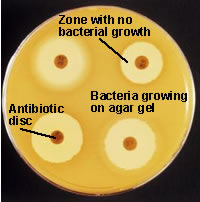
Material and Methods
Refer to scientific skills and tools manual BIOL2310, p. 78-79.
Results
Table (4): Antibiotic susceptibility of different S. aureus strains.
Discussion
The three strains of S. aureas showed regions of inhibitions around all the available antibiotics. After measuring the length of the inhibition zones, Penicillin G had the widest region of inhibition which means that it is the strongest antibiotic against the bacterial strains. The least effective antibiotic, according to the results, was Oxacillin which had the shortest length of inhibition zone.
However, Penicillin G had a shorter inhibition zone on strain B which means that it is less effective on the strain which could be explained by the presence of enzymes on the B strain which are resistant to Penicillin and other mutation for that matter.
Works Cited
- Balows, A. 1991. Manual of Clinical Microbiology 5th ed, vol. ASM press Washington.
- C.H. Collins , P. M. L., J. M. Grange & J.O. Falkinham III. 2004. Collins & Lynes Microbiological Methods 8th ed, vol. Arnold London.
- Geo. F. Brooks , J. S. B. & S. A. M. 1998. Jawetz , Melnick , & Adelbergs Medical Microbiology 21st ed, vol. Appleton and Lange.
- Martin, S. M. F. W. J. 1982. Diagnostic Microbiology 6th ed, vol. The C.V. Mosby Company St.Louis , Missouri.
- Mayer, G. 2010, posting date. ANTIBIOTICS – PROTEIN SYNTHESIS, NUCLEIC ACID SYNTHESIS AND METABOLISM The University of South Carolina.
- Patrick R. Murray , K. S. R., George S. Kobayashi & Michael A. Pfaller 1998. Medical microbiology 3rd ed, vol. Mosby, Inc., St.Louis , Missouri.